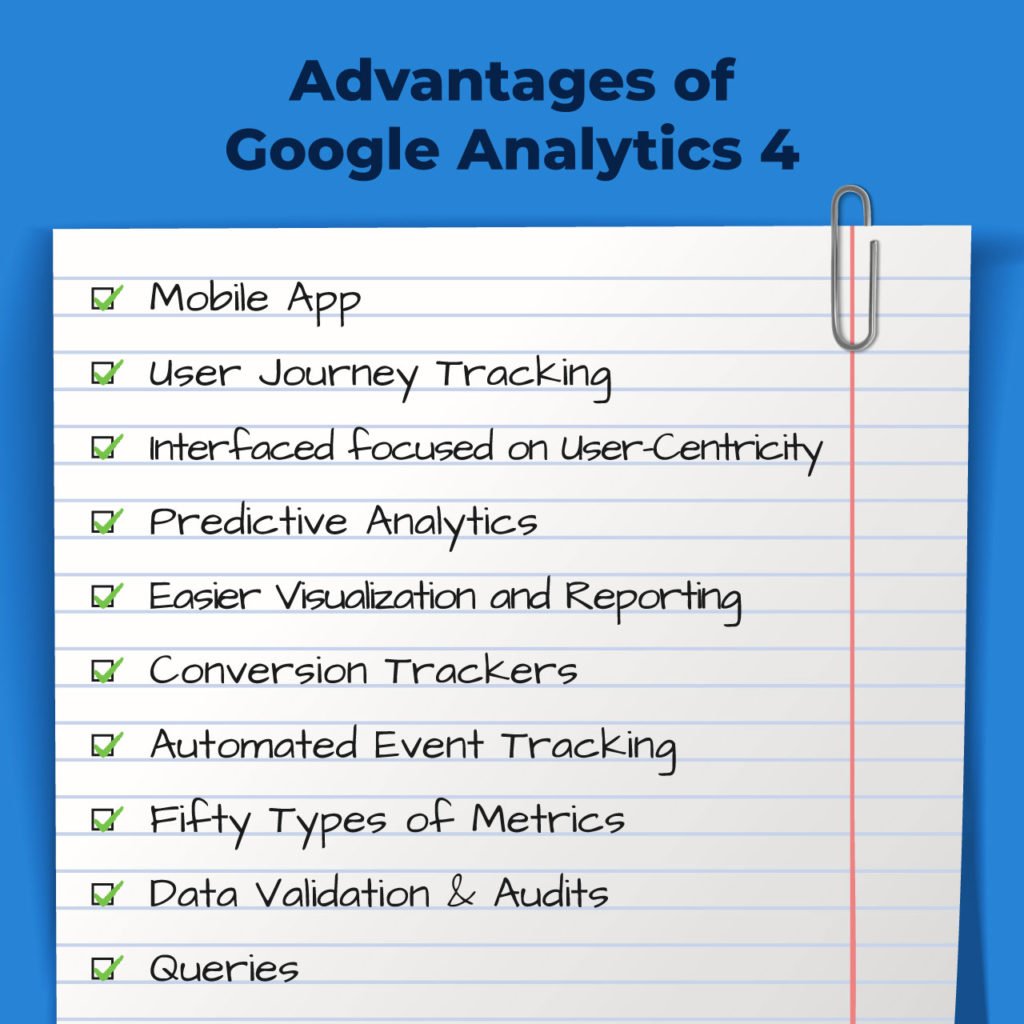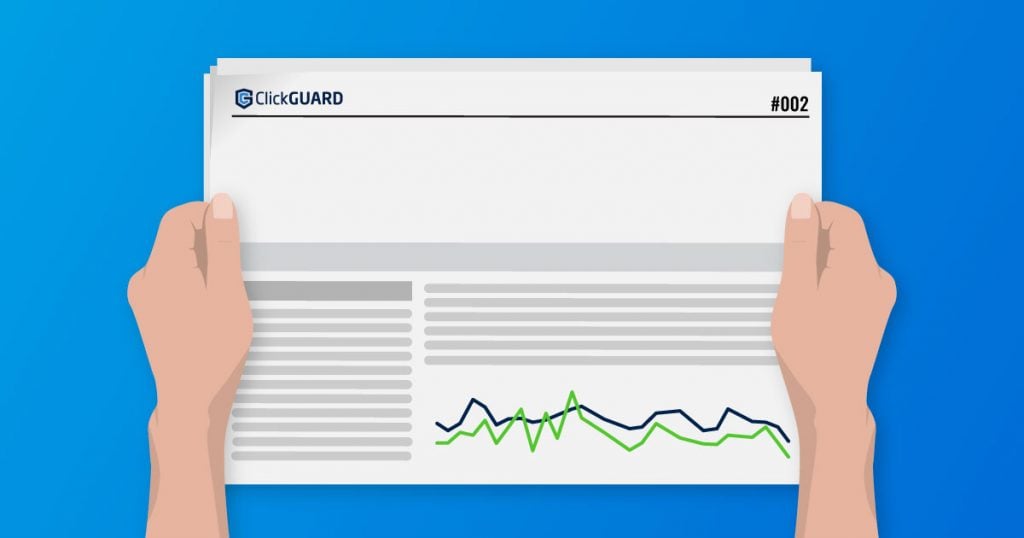As previously reported, Google Analytics 4 has come out of beta testing, and marketers everywhere are torn as to whether they find this tool useful or not. While small business owners felt like it was difficult to use, other marketers thought that Google Analytics 4 has streamlined their own marketing processes.
Although each individual marketer, ad manager, and business owner has differing views on whether or not Google Analytics is the future of marketing, this article primarily focuses on the good aspects of Google Analytics 4 and why marketers everywhere should try it.
Backlash
When Google Analytics 4 first came out, it faced significant backlash from ad managers, marketers, and small business owners. One of the key factors that went into this staunch criticism was the Google Analytics 4 interface.
Individuals, especially small business owners without a marketing department or an ad manager, find the platform difficult to navigate. Common features are hidden within the website’s code, which makes it harder for small business owners and tech newbies to get the hang of the website.
In the same vein, marketers think that Google Analytics is too complicated. Not only is the interface confusing, but there are so many features that some marketers just don’t need, or don’t want. This is especially a deterrent for those who want a simple, streamlined, efficient way to keep track of marketing as opposed to overly complicated matters.
Third-party add-ons also aren’t compatible with Google Analytics, which comes as a blow to marketers to depend on third-party add-ons and extensions to help them market. Third-party add-ons are necessary for some marketers – one size doesn’t fit all in this industry – and therefore this comes as an inconvenience for marketers, business owners, and ad managers who prefer using third-party add-ons in addition to Google Analytics.
There are also individuals who feel that Google Analytics 4 should have been released later due to the many bugs and errors. Errors can ruin ad campaigns and provide inaccurate user data, so precision and an error-free program is understandably desirable. Users all over the internet are discouraged and dissatisfied with the new Google Analytics 4 because they believe that it should still be in beta form to work the bugs out.
The Upside
Despite the intense backlash from marketers and ad managers, Google Analytics 4 actually has some useful features that set it apart from other ad campaign trackers.

1. There’s an app for that!
What really sets Google Analytics apart from other ad platform managers is that it comes in an app form as well as a website. This is great for marketers who travel a lot and don’t always have internet access. This app has all the web-tracking abilities as the website in a condensed, easy-to-use format that’s perfect for when marketers need to quickly reference something.
Also, the app has the added bonus of consolidating data from websites into one simple, streamlined place. Not only will this keep you organized, it can also provide multiple data streams such as iOS, Android, and even the web!
2. It’s the journey, not the destination.
As mentioned previously, the user journey and the events that trigger them are accurately captured by Google Analytics 4. While other platforms focus on a user’s activity at a specific point in time, Google Analytics 4 provides a timeline of the user’s journey which can then be used to predict their future behavior. By tracking past, present, and estimating future behaviors, it becomes easy to market towards these customers as marketers will already know what they want.
A user’s journey is also tracked throughout various platforms, such as Instagram and other social media platforms. By measuring interaction throughout many different user locations, it’s easy to gain a holistic, complete view of customer behavior. Not only that, but a user’s activity can be tracked throughout devices.
Whether a customer is browsing the web via a laptop, or if they’re on their phone, marketers will be in the know! This is a great way for marketers to tailor ads based on the social media platform and the devices they use.
3. Looks do matter.
Though some people dislike the Google Analytics 4 interface, it actually gives marketers several benefits, especially when it comes to monitoring user-centric activity. The buckets that are featured within Google Analytics 4 are more specifically tailored to user-oriented reports and marketing goals. It’s a great way to keep the customer the focus of a business while also keeping track of important customer features such as demographics, purchase history, and ad monetization.
4. It’s possible to predict the future.
Did you know that Google Analytics 4 has predictive properties? Google Analytics 4 has predictive metrics that are derived from algorithms that help to measure the conversion process. This works by taking the data that marketers have accumulated and enriches it with the Google algorithm to predict what a customer’s next purchase will be.
Not only is this a great way to plan future ad campaigns, but it’s great for predicting and even implementing limited edition products.
There are three kinds of predictive metrics that Google Analytics 4 implements. The first one is purchase probability, which detects and makes predictions based on the last 28 days of user activity. Purchase probability is great for maintaining a consistent customer base.
Churn probability is the next type of predictive metric that Google Analytics 4 implements. This is a probability that is measured from users who were active for the last seven days but probably won’t be active for the next seven days. Churn probability is a great thing to use for people who are traveling and shopping locally, and it’s a great way to market towards people who have busy lives.
The last type of predictive metric that Google Analytics 4 uses is revenue prediction. It’s possible to predict the amount of revenue a business will make, and it’s accurate because it’s based on purchase events from the last 28 days. Revenue prediction will also take future purchase events into account, which makes it easier to budget for your ad campaigns.
5. Advanced Analysis!
Google Analytics 4 comes with predefined techniques that were previously unavailable to Google Analytics users who used earlier versions.
There are many reports that can be generated on the new Google Analytics 4 platform. The first report that can be created is called the exploration report, which represents data in an easy-to-read table layout. Marketers also have the option to refine this data by adding filters and custom segments.
Another type of analysis is the cohort analysis report, which is a great way to keep track of data within specific groups. This is a great way to make marketing campaigns hyper-specific to whatever demographic is being tracked.
The funnel analysis report is as interesting as it sounds! This feature allows business owners to visualize a customer’s journey. This makes it easy to pinpoint the steps that are succeeding and failing. Therefore, implementing and addressing problems and issues (such as cart abandonment) can be improved in a snap.
Another unique type of report is called the segment overlap report, which is a great tool for marketers who want to compare three user segments and see how they’re interconnected. Not only does this broaden the audience being marketed to, but it’s also a great way to compare customers on an individual and group basis.
The user explorer report is another nifty feature. This allows marketers to show you which users made up the segments you created or imported, allowing for uniformity and organization that simultaneously highlights customer differences and similarities.
The path analysis report is a great way to keep track of a user’s journey as well as their other browsing activity. Marketers can gain insight into the websites customers have visited, as well as what that user clicked on. Path analysis is a great way to keep track of looping behaviors that can then be used to help customers stay on your page.
Last – but certainly not least – is the lifetime user report. Marketers and ad managers can keep track of a user’s behavior even after they’ve left your website. It then becomes easier to track the last time a loyal customer made a purchase, the last time they engaged with your website, and how they came upon your brand in the first place. The lifetime user report also provides interesting and useful insight regarding the success of campaigns in terms of lifetime value.
6. Easier visualization and reporting.
Google Analytics 4 makes it easy to visualize real-time data at a glance. Getting a complete, holistic view of your data all in one place makes organization a breeze. Marketers can also interact with this data dynamically, which can help with data comparisons.
7. Conversion trackers made easy!
Google Analytics 4 allows marketers to set up as many conversions as they wish, which other analytics platforms don’t allow. Event tracking, modifying, and creating a new event based on previous events and set parameters make data easy to analyze.
8. Automated event tracking!
Automating events has never been easier. Data such as page views, scroll events, link clicks, site searches, video engagements, and file downloads. Now you can see which aspects of your website are a hit or a miss.
9. Cross-domain tracking.
Complicated set-ups are a requirement for many ad management platforms. With Google Analytics 4, however, cross-domain tracking is extremely simple. No additional tagging is required – all that’s necessary is configuring domains in the Admin section.
10. More metrics.
Google Analytics 4 supports 50 event-scoped custom dimensions and metrics, which means you can tailor your metrics to exactly what you’re looking for. With nothing extraneous distracting you, you’ll get a great sense of the type of people who visit and engage with your content.
11. Data validation and audits.
Data validation and audits are built right into the very fabric of the user interface. This makes it extremely simple to debug your implementation set up in order to validate your analytics. Marketers can isolate and see data from a specific device that enables the debug mode.
A unique feature of this data validation is minute tracking. That’s right – you can track user activity by the minute to get a very specific, comprehensive view of user activity. If you want an even more precise view of activity, you can implement second tracking.
12. Queries.
Marketers and ad managers can export raw data from Google Analytics 4 and export it into an external tool. This is great for when marketers and ad managers need to use an external data source to keep track of their information.
Backlash or Benefits?
The choice is up to you. Whether you believe that Google Analytics 4 has a lot to improve, or if you’re mesmerized by the number of benefits Google Analytics 4 provides, there’s a tool out there for you to manage your ad campaigns. Google Analytics 4 has several qualities that make it great and several qualities that make users across the internet dislike it. No matter where you stand regarding the Google Analytics 4 debate, we’re sure that your ad campaigns will flourish and thrive.



